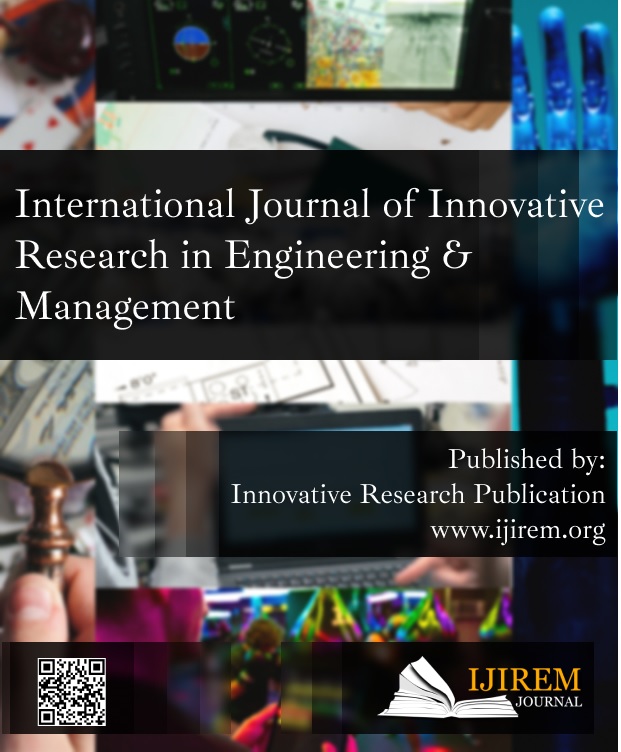Are More College Graduates Necessary?
Keywords:
Competition Rates, College Graduate, Degrees, Early Intervention, EmploymentAbstract
President Barack Obama has launched a new initiative to boost the proportion of young people with a college degrees. More degrees would be advantageous if more low-income students obtained them, according to the report, since social mobility may be difficult without one. When substantial external factors such as high school quality, family income and wealth, and parent educational background are included, the work becomes more challenging (s). According to the research, early intervention measures have the best likelihood of boosting the number of degree holders from low-income families. Since then, the White House has taken a number of steps to help in the completion of the work. The president donated the bulk of his $1.4 million Nobel Peace Prize to six groups that support underprivileged students' access to higher education, indicating his commitment to increasing the number of graduates.
Downloads
References
A. K. Et.al, “The SmartPLS Analyzes Approach in Validity and Reliability of Graduate Marketability Instrument,” Turkish J. Comput. Math. Educ., 2021, doi: 10.17762/turcomat.v12i3.791.
R. Ashraf, J. M. Godbey, M. M. Shrikhande, and T. A. Widman, “Student Motivation and Perseverance: Do They Explain College Graduation?,” J. Scholarsh. Teach. Learn., 2018, doi: 10.14434/josotl.v18i3.22649.
K. Bluth, J. Park, and C. Lathren, “Is parents’ education level associated with adolescent self compassion?,” Explore, 2020, doi: 10.1016/j.explore.2020.02.003.
J. T. Denning, R. Murphy, and F. Weinhardt, “Class Rank and Long-Run Outcomes,” Rev. Econ. Stat., 2021, doi: 10.1162/rest_a_01125.
L. Q. Dong and Z. S. Zhang, “Factors affecting female college graduates’ job satisfaction,” Adv. Intell. Soft Comput., 2012, doi: 10.1007/978-3- 642-27711-5_18.
M. Duan and Y. Lv, “Investigation and countermeasure research on employment behavior decision by employment environment of college graduates,” Open Electr. Electron. Eng. J., 2014, doi: 10.2174/1874129001408010625.
S. Andreas, “Effects of the decline in social capital on college graduates’ soft skills,” Ind. High. Educ., 2018, doi: 10.1177/0950422217749277.
S. M. Kim, Y. S. Sim, H. W. Seo, and J. D. Son, “Factor analysis of successful job search for engineering college graduates,” ICIC Express Lett., 2016.
A. Bičáková and Š. Jurajda, “Gender composition of college graduates by field of study and early fertility,” Rev. Econ. Househ., 2017, doi:
1007/s11150-015-9309-6.
G. K. Nithyanandam, “A framework to improve the quality of teaching-learning process - A case study,” 2020, doi: 10.1016/j.procs.2020.05.013.
Y. F. Ho and J. J. Turner, “Entrepreneurial Learning’-The Role of University Led Business Incubators and Mentors in Equipping Graduates with The Necessary Skills Set for Industry 4.0,” Int. J. Educ., 2019.
E. A. Humphrey, A. C. Merwin, and M. Tekkumru-Kisa, “Advancing Cognitively Demanding Tasks in Undergraduate Classrooms: Using Graduate Student Discussion Groups & the Task Analysis Guide in Science (TAGS) as Leverage,” Am. Biol. Teach., 2020, doi: 10.1525/abt.2020.82.1.53.
W. H. Dean, S. Grant, J. McHugh, O. Bowes, and F. Spencer, “Ophthalmology specialist trainee survey in the United Kingdom,” Eye, 2019, doi: 10.1038/s41433-019-0344-z.
K. Chen, Q. Huang, M. Hu, and R. M. Randoy, “Perspective: Employment conditions for computer engineering related college graduates in China,” 2011, doi: 10.1109/ICCSE.2011.6028729.
A. Wang, “Research on Structural Unemployment Question of Regular College Graduates,” 2010. [16] R. K. Sharma, J. Sharma, D. V. Rai, and M. Zafar, “Cod reduction from industrial wastewater using thermal liquid-phase oxidation technique,” Int. J. Chem. Sci., 2013.
D. Parihar, V. Thawani, R. Singh, and R. S. Raina, “Simultaneous estimation of paracetamol, diclofenac and tizanidine in tablet formulation,” Int. J. Pharm. Res., 2012.
A. Singh, A. Arya, and S. Sharma, “High gain of C shape slotted microstrip patch antenna for wireless system,” Int. J. Appl. Eng. Res., 2012.
H. Dwivedi, K. Agrawal, and S. A. Saraf, “Evaluation of factors affecting uricase production by the screened wild/natural microbes,” E-Journal Chem., 2012, doi: 10.1155/2012/976242.
N. Singhal, A. Dixit, R. P. Agarwal, and A. K. Sharma, “Reducing network traffic and managing volatile web contents using migrating crawlers with table of variable information,” World Appl. Sci. J., 2012, doi: 10.5829/idosi.wasj.2012.19.05.1083.
A. Gaurav, V. Gautam, and R. Singh, “Quantitative structure-activity relationship and design of polysubstituted quinoline derivatives as inhibitors of phosphodiesterase 4,” Med. Chem. Res., 2012, doi: 10.1007/s00044-011-9831-x.
P. Chawla, R. Singh, and S. K. Saraf, “Effect of chloro and fluoro groups on the antimicrobial activity of 2,5-disubstituted 4-thiazolidinones: A comparative study,” Med. Chem. Res., 2012, doi: 10.1007/s00044-011-9864-1.
